Depression is something many of us will experience in our lifetime, whether it’s due to a temporary situation or a long-term struggle. It’s an emotional, mental, and physical burden that can affect anyone, regardless of age, background, or life situation. However, not all types of depression are the same, and understanding the nuances between different types can be the key to getting the right treatment.
This blog post explores two common types of depression you might be experiencing during this time of year: seasonal affective disorder (SAD) and clinical depression (major depressive disorder). Understanding their differences can help you better determine the best course of action for your mental health journey.
What is Seasonal Affective Disorder (SAD)?
Seasonal affective disorder, or SAD, is a type of depression that tends to appear during specific times of the year, most commonly in the winter months. It’s more than just feeling a little down when the days get shorter or the weather turns colder. SAD is a real condition, and for those who experience it, it can significantly impact daily life.
The symptoms of SAD mirror those of other types of depression, but they come with a seasonal twist. Common symptoms include:
- Fatigue and low energy: It can feel almost impossible to get out of bed or keep up with your regular activities.
- Hypersomnia: You may want to sleep more than usual to escape feelings of sadness.
- Carb cravings and weight gain: You might find yourself craving carb-heavy foods like pasta, bread, and sweets, which can lead to weight gain.
- Social withdrawal: You might feel less motivated to engage with friends, family, or work, and have a desire to isolate from social interactions.
Unlike the more common “winter blues” that affect many people in colder months, SAD can be debilitating. If you’ve found that your mood tends to dip during a specific season, and it’s disrupting your daily life, it’s worth considering whether you might be experiencing SAD.
What Causes Seasonal Affective Disorder (SAD)?
The exact cause of SAD isn’t entirely clear, but several factors contribute to its development. The most significant is the seasonal change itself, with symptoms typically becoming worse as the days grow shorter in the fall and winter.
- Reduced sunlight: During the winter months, the amount of sunlight we get each day decreases. This can disrupt your body’s natural rhythm and impact your mood.
- Disruption of circadian rhythms: The lack of sunlight can interfere with your internal biological clock, making it harder for you to maintain a consistent sleep-wake cycle.
- Lower serotonin levels: Sunlight also plays a role in boosting serotonin, a neurotransmitter that helps regulate mood. With less sunlight, serotonin levels can dip, leading to feelings of depression.
While SAD can be tough to cope with, it’s important to remember that it typically resolves as the season changes and the days get longer. In the meantime, we recommend making intentional choices to combat the gloomy weather.
What is Clinical Depression?
Clinical depression, also known as major depressive disorder, is a more persistent and severe form of depression that can affect anyone at any time of the year. Unlike SAD, clinical depression is not tied to seasonal changes.
Common symptoms of clinical depression include:
- Prolonged low mood: You might feel persistently sad, hopeless, or empty for extended periods of time.
- Loss of energy: Everyday activities can feel exhausting, and you may struggle to perform tasks as you normally would.
- Feelings of worthlessness: Depression often brings feelings of guilt or worthlessness, which can make it hard to see any hope or value in life.
- Sleep issues: Whether it’s insomnia (trouble sleeping) or hypersomnia (sleeping too much), depression can have a huge impact on your routine.
- Appetite changes: You might find yourself eating too much or not at all, both of which can lead to noticeable weight changes.
- Thoughts of self-harm or suicide: In severe cases, depression can lead to thoughts of self-harm or even suicide.
While SAD tends to improve as the seasons change, clinical depression can persist for weeks, months, or even years without treatment. If you find that you’re experiencing several of these symptoms, especially if they last for more than two weeks, it’s important to seek help.
What Causes Clinical Depression?
There isn’t one simple cause of clinical depression. It’s often the result of a combination of factors:
- Genetics: Family history can play a big role in whether or not you develop depression.
- Brain chemistry: Imbalances in neurotransmitters like serotonin, dopamine, and norepinephrine can contribute to feelings of depression.
- Life events and trauma: Major life stressors such as losing a loved one, going through a divorce, or experiencing trauma can trigger depression.
- Substance use or medications: Some medications or substances can cause depression as a side effect, while others might make existing depression worse.
Because clinical depression can arise from so many factors, some of which intertwine, its treatment requires a nuanced and individualized approach. Working with mental health professionals, like our team at Alvarado Parkway Institute, can help you understand what might be contributing to your depression and how to address it.
Key Differences Between SAD and Clinical Depression
While SAD and clinical depression share some common symptoms, there are key differences that can help distinguish them:
- Trigger/onset: SAD has a clear seasonal pattern, typically starting in the fall or winter, while clinical depression can happen at any time of the year.
- Duration: SAD often resolves on its own as the seasons change, whereas clinical depression can persist for weeks, months, or years without professional intervention.
- Symptoms: Both conditions share symptoms like low energy and sadness, but SAD is more likely to include seasonal behaviors like increased sleep and cravings for carbs. Symptoms of clinical depression tend to be more severe or extreme.
- Treatment approach: Treatment for SAD can be done on your own and often involves light therapy, vitamin D supplements, and lifestyle changes, whereas treatment for clinical depression generally involves a combination of psychotherapy, medication, and other interventions.
Treatment Options for SAD and Clinical Depression
There is some overlap in treatment approaches for SAD and clinical depression, but there are also a few key differences.
Treatment for SAD
- Light therapy: One of the most effective treatments for SAD is light therapy. This involves sitting in front of a light box that mimics natural sunlight. It helps regulate your circadian rhythm and boost serotonin levels, which can alleviate your symptoms. Light lamps are widely available online and in stores.
- Behavioral therapy: Cognitive Behavioral Therapy (CBT) can be used to help you learn new ways to manage your mood and cope with the stressors of the season. CBT is a staple of inpatient, partial hospitalization, and outpatient depression treatment.
- Lifestyle changes: Increasing physical activity, spending time outside during daylight hours, and maintaining a regular sleep schedule can help mitigate some of the symptoms of SAD.
Treatment for clinical depression
- Psychotherapy: Cognitive Behavioral Therapy (CBT), talk therapy, or other forms of psychotherapy can help you understand the root causes of your depression and develop coping strategies.
- Antidepressants: Medication can be effective in balancing the brain chemicals that contribute to depression, but that may not always be the case. It’s important to consult with a doctor before taking any medication for depression.
- Holistic care: A well-rounded treatment plan may include exercise, meditation, a healthy diet, and other lifestyle changes that support your overall wellness.
Co-occurrence of SAD and Clinical Depression
It’s important to note that it’s possible for you to experience both SAD and clinical depression at the same time. If you experience seasonal depressive symptoms but also struggle with persistent symptoms year-round, it’s crucial to get an accurate diagnosis. That way, you can develop a treatment plan that addresses both conditions.
When to Seek Help
If you’re experiencing any of the symptoms we’ve discussed, it’s important not to self-diagnose. Only a mental health professional can accurately diagnose your condition and recommend the best treatment options for you.
If you notice persistent feelings of hopelessness, difficulty functioning, or thoughts of self-harm, it’s time to seek professional help. Remember, untreated depression can have serious consequences, so it’s always better to reach out sooner rather than later.
Clinical Depression Treatment in San Diego
At Alvarado Parkway Institute, we provide care for both seasonal affective disorder and clinical depression. Understanding the subtle distinctions between these conditions is vital for developing a treatment plan that will truly make a difference.
If you’re ready to take the next step in managing your depression, contact us today to learn more about our treatment options. Together, we can make progress and help you feel better.
